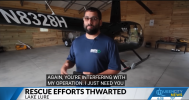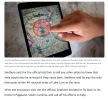- Joined
- Feb 8, 2018
- Messages
- 8,536
- Reactions
- 13,799
- Age
- 56
When I first bought a drone, it was to find UFOs in the clouds and for search, help, and rescue. I went as far as to create a life ring that could be dragged across the water with my drone to provide a flotation device to save a life. It all sounded good, but the reality was far different than I had imagined.
Anyone with a private helicopter or large truck to take goods were on their way, but many found their search and rescue very frustrating and many helicopter pilots were threatened with going to jail, which surprised me as I thought they were at the top of the food chain but apparently they are not.
I think the reason why I am posting this is that I could have easily been one to get a helicopter, thinking maybe then I could be a superhero one day. lol
The reality is the systems they have in place really have no room for truckers and helicopters to come in and save the day, that's not how it works. There is a very strict system put into place for both drone pilots and Helicopter Pilots as well.
Somehow knowing this makes me feel better about my drone and what is really possible. I should mention many of the pilots were police, fire, and rescue and still denied its seems were more equal than I thought.
Phantomrain.org
Gear to fly in the Rain, Land on the Water , and Capture the Adventure of the storm.
Here is the Video but there is a learning curve that needs to be understood.


Anyone with a private helicopter or large truck to take goods were on their way, but many found their search and rescue very frustrating and many helicopter pilots were threatened with going to jail, which surprised me as I thought they were at the top of the food chain but apparently they are not.
I think the reason why I am posting this is that I could have easily been one to get a helicopter, thinking maybe then I could be a superhero one day. lol
The reality is the systems they have in place really have no room for truckers and helicopters to come in and save the day, that's not how it works. There is a very strict system put into place for both drone pilots and Helicopter Pilots as well.
Somehow knowing this makes me feel better about my drone and what is really possible. I should mention many of the pilots were police, fire, and rescue and still denied its seems were more equal than I thought.
Phantomrain.org
Gear to fly in the Rain, Land on the Water , and Capture the Adventure of the storm.
Here is the Video but there is a learning curve that needs to be understood.


Last edited:









